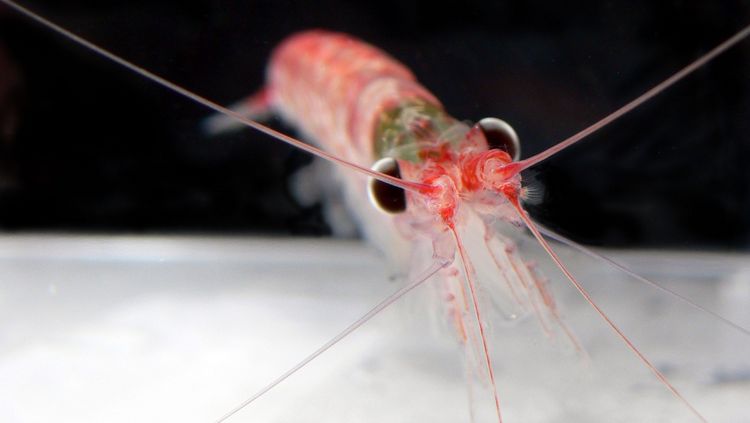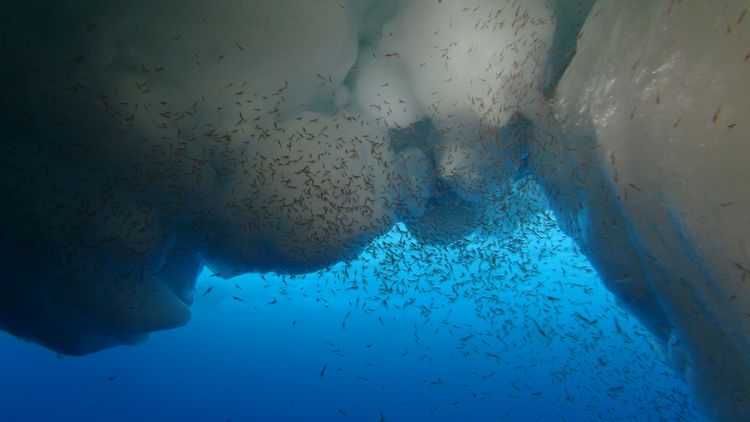The crustacean Euphausia superba (Antarctic Krill) is one of the world's most abundant species and the central diet of a number of animals in the Southern Ocean. Results by researchers of the University of Oldenburg now indicate, that mainly competition for food drives the regularly occurring fluctuations in stock size.
The Antarctic Krill is only six centimetres long, but it plays a major role in the Antarctic ecosystem. For a long time, scientists have been puzzled why the size of krill stocks fluctuates so widely. In a new study headed by Prof. Bernd Blasius and Prof. Bettina Meyer, a group of scientists from the University of Oldenburg's Institute for Chemistry and Biology of the Marine Environment (ICBM) and the Bremerhaven-based Alfred Wegener Institute, Helmholtz Centre for Polar and Marine Research (AWI) have shown that the competition for food within the population is responsible for the variability. The researchers evaluated long-term data and developed a mathematical model to investigate the change in the krill stocks. Their findings have now been published in the latest issue of the respected journal Nature Ecology & Evolution.
It has long been known that stocks of Antarctic krill vary widely over a five to six-year period, with more than ten-fold changes in the biomass. To date, experts have presumed that climatic factors, characterised by distinct seasons, were responsible for this “krill cycle”. But there was never any real proof of this assumption.
Now, analyses by the researchers from Oldenburg and Bremerhaven indicate that it is a self-generating mechanism, induced within the population, that is responsible for the cycle. Particularly in the Antarctic autumn, the small crustaceans within a swarm increasingly compete for food. At this time of year the larvae and adults need to lay down sufficient fat reserves for the upcoming winter. At the same time the krill’s food supply – microscopic small algae, the phytoplankton – becomes less abundant when the days become shorter. Large krill stocks have to starve for long periods, have to overwinter and reproduce. All these factors cause the fluctuation of a population.
“We are able to show that it is mainly competition within the krill population in autumn that causes the fluctuations,” explains ICBM researcher Dr Alexey Ryabov. Until now, scientists have assumed that winter is the critical season for the survival of larval krill. In winter, when large areas of the Southern Ocean are covered with ice, there is only a small amount of food available what the small crustaceans can feed on. “Our findings shed new light on this assumption,” says Meyer.
The scientists were able to simulate the process by using a “bioenergetic” model, which illustrates, amongst others, the development of krill, from the egg to adults. “The results of this simulation correspond closely with the observed cycle over an 18-year period,” says Blasius.
According to the researchers their simulations will help to gain a better understanding of the Southern Ocean food web, since krill plays a key role in the Antarctic ecosystem: they are the prey of whales, seals and penguins. The model shows – if there are less of these large predators, the amplitude of the krill stock fluctuations will increase. “This could destabilise the foodweb in the region and decrease the number of large predators as a consequence,” explains Meyer. Conversely, increased hunting pressure on krill could stabilise their stocks. “Any factor that alters this delicate balance can have dramatic effects on the entire Antarctic ecosystem,” concludes Blasius.




